#mantled howler monkey
Explore tagged Tumblr posts
Text

Mantled Howler Monkey Alouatta palliata
7/28/2023 Guanacaste, Costa Rica
#mantled howler monkey#howler monkey#monkey#monkeys#primate#primates#costa rica#guanacaste#playas del coco#central america#bird#birds#bird photography#wildlife#nature#nature photography#wildlife photography#birding#birdwatching#my photos
14 notes
·
View notes
Text

Mantled howler (Alouatta palliata)
TK
#iicraft505#animals#mammals#primates#haplorhini#simiiformes#atelidae#monkeys#howler#howler monkeys#mantled howler#mantled howler monkey#hehe balls
1 note
·
View note
Text
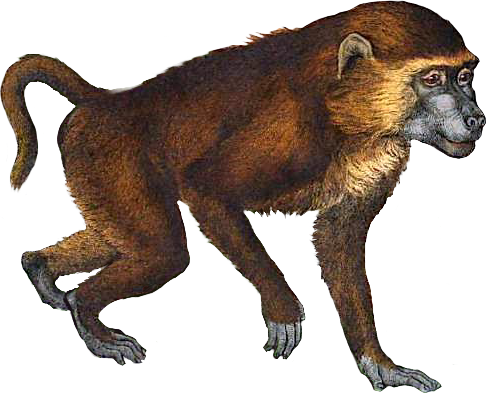
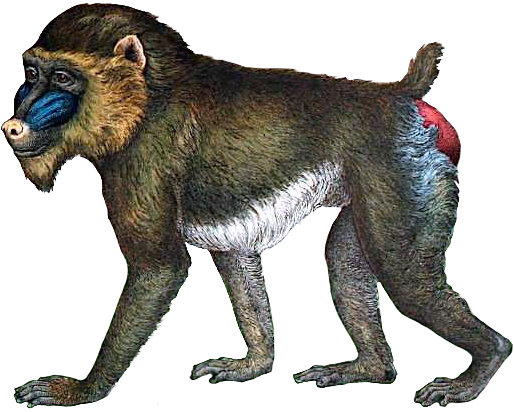
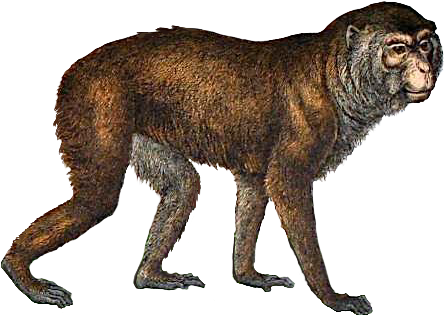
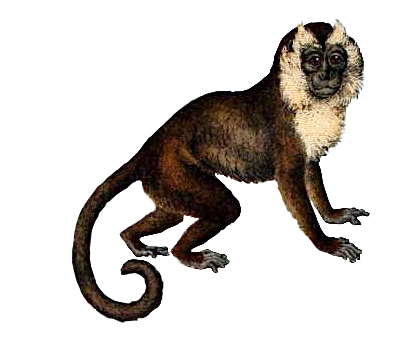
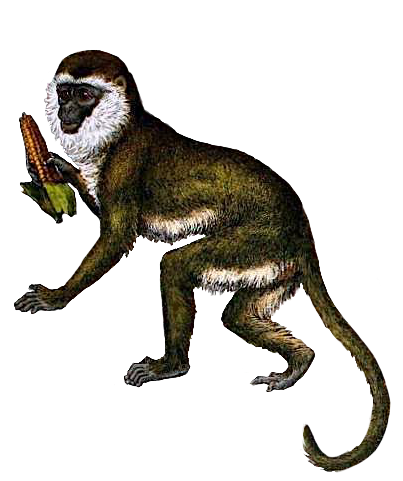
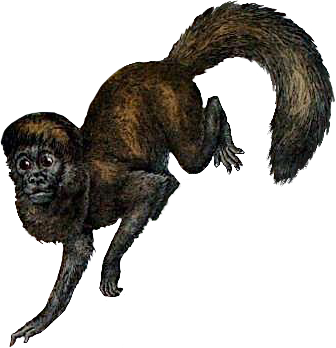
A mixture of monkeys:
Papio cynocephalus, yellow baboon Mandrillus sphinx, mandrill Macaca sylvanus, Barbary macaque Sapajus apella, brown capuchin Chlorocebus sabaeus, green monkey Alouatta palliata, mantled howler monkey
Via Natural History of the Animal Kingdom for the Use of Young People, W. F. Kirby, 1889
#mammalia#illustration#w f kirby#transparent#1889#primates#monkeys#papio#papio cynocephalus#mandrillus#mandrillus sphinx#sapajus#sapajus apella#chlorocebus#chlorocebus sabaeus#alouatta#alouatta palliata#png#vintage#antique#public domain
14 notes
·
View notes
Text

The hind end of a Mantled Howler Monkey (Alouatta palliata) displaying unusual depigmentation (possibly vitiligo?)
Howler monkeys with unusual depigmentation are becoming increasingly common, and research is suggesting this may be due to increased pesticide exposure.
43 notes
·
View notes
Text

Excerpt from this story from NBC News:
Threatened howler monkeys have been dropping dead from trees in Mexico’s southeastern tropical forests in recent weeks amid a nationwide drought and heat waves that have sent temperatures soaring across much of the country.
In the state of Tabasco, where temperatures are forecast this week to surpass 45 degrees Celsius (113 degrees Fahrenheit), local media have reported up to 85 deaths, while local authorities have confirmed the trend without providing a death toll.
In a statement over the weekend, Tabasco’s Civil Protection agency attributed the deaths to dehydration.
A source from the agency told Reuters on Monday that monkeys have been confirmed dead in three municipalities of the state.
In a forest outside Camalcalco, Tabasco, volunteers collected the corpses of mantled howler monkeys (alouatta palliata) that died from high temperatures, before placing buckets of water and fruit to try to stave off more deaths.
The mantled howler monkey is classified as vulnerable on the International Union for Conservation of Nature (IUCN) Red List.
5 notes
·
View notes
Text

Mantled guereza (Colobus guereza)
These stunning monkeys live in the forests of central Africa. They are well adapted for eating leaves, but will also eat fruit, wood, insects, and soil. Like howler monkeys of South America, guerezas will create a roaring dawn chorus that can be heard from a surprisingly long way away.
#markhors-menagerie#primates#old world monkeys#monkeys#animal facts#fun facts#animals#biology#colobus monkey#mantled guereza
9 notes
·
View notes
Text
Round 1, part 2, match 1: colobus monkeys
Mantled guereza (Colobus guereza)

These stunning monkeys live in the forests of central Africa. They are well adapted for eating leaves, but will also eat fruit, wood, insects, and soil. Like howler monkeys of South America, guerezas will create a roaring dawn chorus that can be heard from a surprisingly long way away.
Zanzibar red colobus (Piliocolobus kirkii)

This species of colobus is only found on Unguja island, off the coast of Tanzania. Isolated here, they have developed a more human-like face, with a flatter snout and larger brain. They live in a variety of forest environments, and have a specialised stomach for digesting leaves. They are also known to eat soil and charcoal.
12 notes
·
View notes
Text
Last day in Napo lodge, Amazonas Ecuador
On the last day of the amazon vacation I took a boat to Panacoche lake to fish for piranha. We fished for piranha but no luck…but another group caught one and I did get to try it. Black mantle tamarind Juvenile red howler monkey White winged swallow Tropical cormorant Blue and yellow macaw Sand colored nighthawk Parakeet One last night hike… This lizard camouflaged well Napo is a…

View On WordPress
0 notes
Text

Mantled Howler Monkey Alouatta palliata
7/28/2023 Guanacaste, Costa Rica
#mantled howler monkey#howler monkey#monkey#monkeys#primate#primates#costa rica#guanacaste#playas del coco#central america#bird#birds#bird photography#wildlife#nature#nature photography#wildlife photography#birding#birdwatching#my photos
10 notes
·
View notes
Text

Mantled howler (Alouatta palliata)
TK
#iicraft505#animals#chordata#mammals#primates#haplorhini#simiiformes#monkeys#howler monkeys#mantled howler#mantled howler monkey
1 note
·
View note
Text



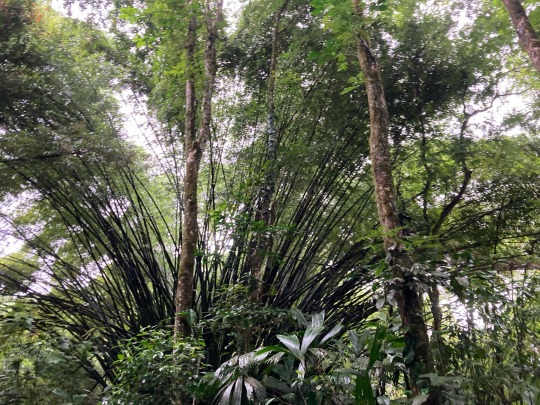


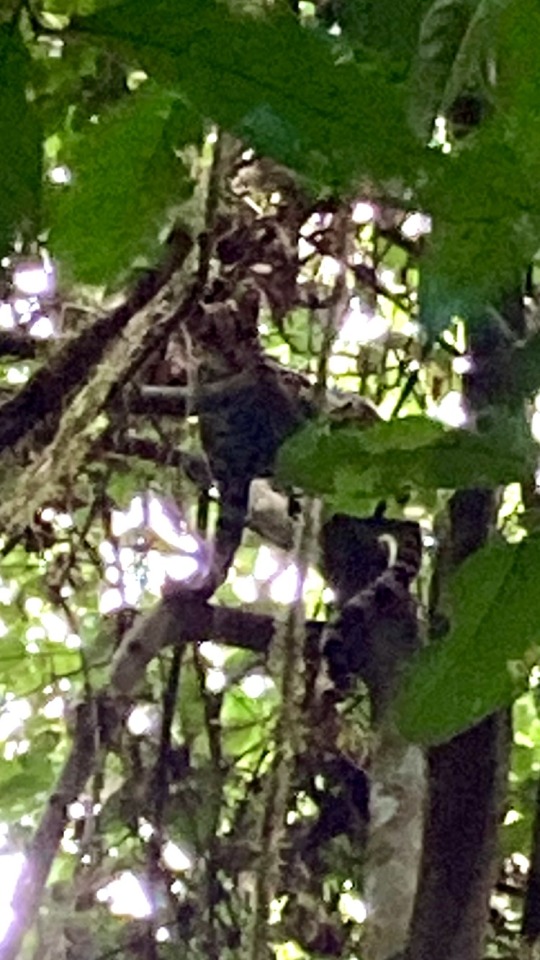



just spent the last several weeks researching mantled howler monkeys... got sick 2x, dislocated my knee, got chemical burns from bug spray, my things grew mold from the humidity, but i also collected data and wrote a research paper, learned im a very skilled navigator who doesnt even need a map just a compass, discovered im also incredibly good at opening coconuts to drink from them then eat, navigated off trail many times very successfully, floated down a river drunk on rum, met some amazing people, and saw the craziest fucking things. i would go back in a heartbeat
#tree talks#it was AMAZING#i dont really study primatology but it was fantastic#and i learned that i LOVE working out in the field#and feel like a whole different person#anyway hit me up if you want to hear about my research#it was on mantled howler monkeys
4 notes
·
View notes
Photo
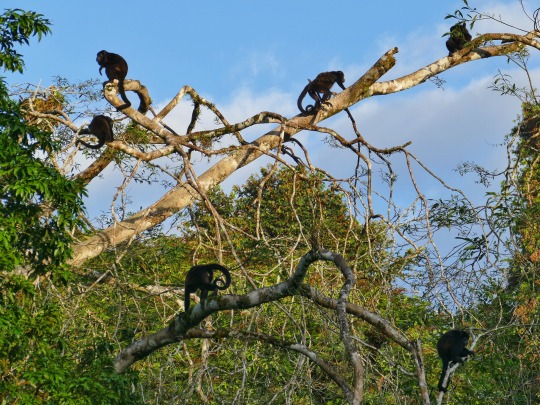

Golden-mantled howler Monkeys/Mantel Brüllaffen sind die häufigste Affenart in La Selva. In Familienverbänden bis zu zehn sind sie auch oft am Fluss zu beobachten.
7 notes
·
View notes
Text
In the Intag Valley of Ecuador, at this “most biodiverse hotspot on the planet” (the cloud forests of the tropical Andes), local communities have engaged in 30 years of sustained defense of environment and resistance to multiple mining corporations, including Canada’s Copper Mesa Corporation. The group Defensa y Conservación Ecológica de Intag has helped plant tens of thousands of trees while establishing about 40 different forest reserves. Now the planet’s biggest copper producer company (Codelco) is targeting the Intag region, with wells already drilled and important court cases scheduled for 2023. Among the many unique orchids, moths, hummingbirds, plate-billed mountain toucan, spectacled bears, mountain tapirs, critically endangered brown-headed spider monkey, and other creatures, in Intag Valley there are two species of frog which live nowhere else on Earth, previously thought to be extinct: the longnose harlequin frog and the newly-named “rana cohete resistencia de intag” (”Intag resistance rocket frog”). The frogs now provide “hope” and are the subjects of Intag’s pending court cases.
From January 2023, Mongabay provides a thorough report about Intag’s cloud forest ecosystems, community projects, and resistance to mining. Excerpts from their report below.
---


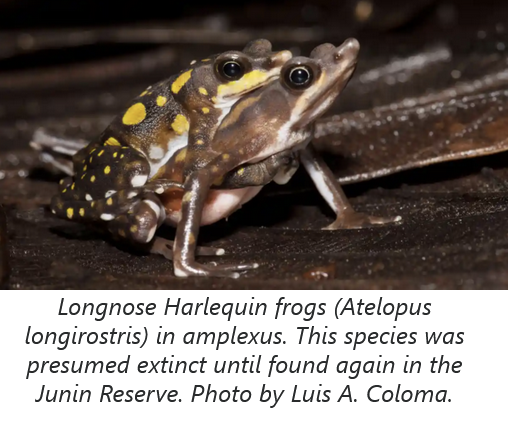


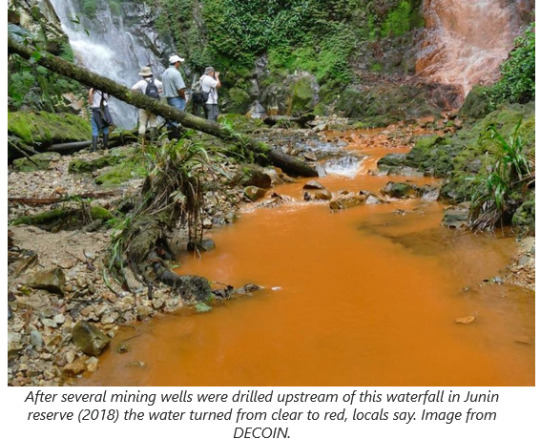


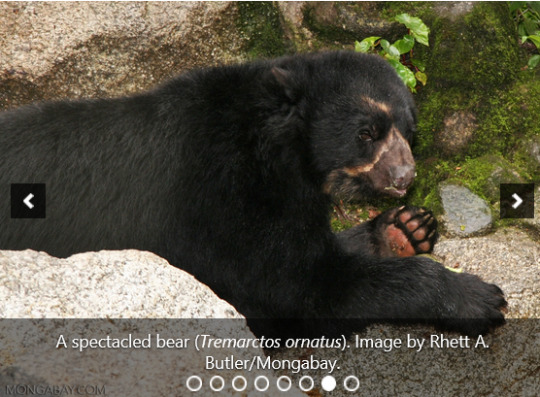
For nearly 30 years, communities have worked to conserve, restore and defend the cloud forests of the Intag Valley in Ecuador, in what locals say is the longest continuous resistance movement against mining in Latin America. The tropical Andes are considered the world’s most biodiverse hotspot, ranking first in plant, bird, mammal and amphibian diversity; however, less than 15% of Ecuador’s original cloud forests and only 4% of all forests in northwestern Ecuador remain. Codelco, the world’s largest copper producer from Chile, plans to open a mine in the Intag Valley that would destroy primary forest and lie within the buffer area of Cotacachi Cayapas National Park — a plan that experts say would be ecologically devastating and not worth the cost. Communities are using the presence of two threatened frog species — previously thought to be extinct — at the mining site to challenge the project [...].
In the 1960s, to encourage development, the government deemed forested properties with no human occupants “unproductive” and open to land grabbers. In turn, landowners were forced to clear at least 50% of the land to prove it was in use. These agrarian laws led to a flurry of deforestation that lasted into the 1990s. [...]
Pumas (Puma concolor), spectacled bears (Tremarctos ornatus), mountain tapirs (Tapirus pinchaque), mantled howler monkeys (Alouatta palliata), the critically endangered brown-headed spider monkey (Ateles fusciceps fusciceps), and the colorful plate-billed mountain toucan (Andigena laminirostris) are just a few of the more charismatic threatened species living here. [...]
Our first foray deep into this “terrestrial coral reef” is led by Roberto Castro, a local nature guide, environmental educator, and Zorrilla’s friend and neighbor. [...]
“Here is the Sangre de Drago tree … its red sap [is] a cure for many ailments,” he says. “Here is the Cecropia tree that lives in partnership with the ants.”
He shows us a white flower that shares its nectar with just one bat species and lets go of its seeds in a grand explosion once the nectar is spent. We see the sickle-winged guan (Chamaepetes goudotii), a large ground bird that lays only one, maybe two, precious eggs in a year. The famed Andean cock-of-the-rock (Rupicola peruvianus) cries out, its song somewhere between that of a parrot and a squealing pig. In the cloud forest, a single leaf is a stage for drama: ants farming aphids, lichens making their slow march against the moss. The forest drips with life.
We stop in a grove of massive elephant ear plants, twice as tall as a person. “These plants tell us water is abundant,” Castro says. The water trail leads us to a 10-meter (33-foot) waterfall. Castro stands in the stream below and pulls out a minuscule underwater castle made from pebbles.
“This is the home of moth larvae,” he shows us. [...]
Zorrilla and other community members started the environmental group Defensa y Conservación Ecológica de Intag (DECOIN) in 1995. [...] DECOIN helped communities establish 38 small-scale forest reserves that, altogether, protect almost 12,000 hectares (nearly 30,000 acres) of forest within the buffer zone of Cotacachi Cayapas National Park. [...]
In Intag, communities are self-defined administrative units, whose leader is nominated by its residents. It’s up to each community to decide how to best protect forests. Most include agreements prohibiting activities such as [...] cattle ranching, mining [...]. Bolaños and fellow community members planted more than 60,000 trees on slopes that were originally forests but had been converted to pasture decades ago. Working for six months each year between 2008 and 2013, dozens of community members planted 22 native species [...].
Intag’s richness aboveground is rivaled by a different kind of wealth below: copper. [...]
In 1996, the Japanese mining company Bishimetals, a subsidiary of Mitsubishi Corporation, found evidence of massive copper deposits in the Intag Valley. [...] In 1997, local communities reacted [...]. No one was harmed in the incident, but it was enough to make the company pull out. [...] After Bishimetals retreated in 1997, things calmed down until the Canadian mining company Copper Mesa Corporation (formally Ascendent Copper) entered the scene in 2004. [...] The company tried for five years to develop the project and used paramilitaries and violent force, Zorrilla tells Mongabay. [...] DECOIN helped residents file a lawsuit against both the mining company and the Toronto Stock Exchange for complicity in human rights violations based on Copper Mesa’s actions. [...] [I]n 2010 the Toronto Stock Exchange delisted Copper Mesa Mining Corporation.
---
Now, the communities face the world’s largest copper producer, Chile’s Codelco, which has partnered with Empresa Nacional Minera (ENAMI EP), Ecuador’s state-owned mining company, and invested millions into advanced mining explorations across Intag — in particular within the 5,000-hectare (12,400-acre) mining concession known as Llurimagua. [...]
According to several community members Mongabay spoke to, around 400 military and police officers used force to ensure the presence of Codelco and ENAMI in the mining concession. [...] Javier Ramirez was the president of the Junín community in 2014 when he was arrested for “sabotage and rebellion against the state.” [...] Codelco persisted and set up camp in the Junín Community Reserve, a patch of primary, old-growth forest [...].
Codelco has installed at least 90 drilling platforms within the reserve, digging down to depths of 1,200 meters (3,900 feet). [...]
The U.S. nonprofit Earth Economics [...] valued ecosystem services in Intag, such as water, food, climate regulation, soil retention, pollination, waste treatment, recreation, and scientific research, at $447 million per year in 2011. That’s higher than the projected revenue from copper mining in the region [...].
At the base of a waterfall, we stop to catch our breath, and Zorrilla steps forward. “This is close to where they found the frogs,” he says.
And here enters hope.
Among the dozens of threatened species in the tropical Andes, two have been found in this reserve and nowhere else on Earth: the longnose harlequin toad (Atelopus longirostris) and the Intag resistance rocket frog whose name was chosen through a contest. Both were presumed extinct until they were recently found again in the Junín Community Reserve. [...]
Finding these frogs has given the community a strong argument to try to legally stop mining development [...].
In September 2020, the Intag communities won one of the few cases upholding the rights of nature in the lower court. But the case was overturned in the higher provincial appeals court due to a procedural error. [...] The case is now before a three-member appeals court. After months of delay, a new judge was appointed in December. The new judge wants to have all of the evidence presented again, essentially starting the process over. The next court hearing is scheduled for Jan. 23 [2023]. [...]
We speak with Norma Bolаños about Mujer y Medio Ambiente (Women and the Environment), a group of nearly 50 women in Intag who make products out of cabuya, a fiber they produce from the agave plant, and color with natural dyes. [...]
In Cotacachi, we visit the home of Cenaida Guachagmira. She’s 28, the same age as the resistance movement, and has known this fight her whole life. [...] “The companies have their weapons and we have our dignity,” Guachagmira told Re:wild in an interview earlier this year.
---
Headline, images, captions, and all text published by: Liz Kimbrough. “In Ecuador, communities protecting a ‘terrestrial coral reef’ face a mining giant.” Mongabay. 9 January 2023. [Italicized heading and first paragraph in this post added by me.]
33 notes
·
View notes
Note
Top five primates! (Are there five I don't really know anything haha don't JUDGE me!)
Aaaaand top five computer keyboard shortcuts. Idk why, I'm whimsical!
🤷♀️
Hey, Howl my love!!
1. Howler monkeys! All howler monkeys really, but mantled howlers are my faves. They're all so loud and dumb. My loves.
2. Aye-ayes. Super misunderstood, super endangered, really creepy, I love them so much.
3. Guenons. I think all guenons are neat and really beautiful (although I guess I am partial to De Brazza's monkeys because I love a beard. They look like wizards).
4. Orangutans! People of the forest! My beloveds.
5. Golden lion tamarins. Tiny beautiful glowing tropical babies.
There are about a million other species I am in love with and interested in, so this was really hard. I can't tell you how many times I changed this list!
I'm technologically inept and can't think of any keyboard shortcuts off the top of my head! I'm sorry!
#this makes me miss undergrad. aahhhh#thank you for this ask though i loved it!#i'm sorry i was only able to answer one of them lol#i was like 'keyboard shortcuts?????' and then my brain went brrrrrr#like i really have no answer for that. i am dumb#spaghetti mutual of my heart#ask game#🐕🍝🐩
7 notes
·
View notes
Text
Currently fiddling with a story but I’m curious to see if anyone would be interested in MORE of this
thanks to @addictedtostorytelling for the gif set that started this
love the idea of how stupidly dumb and in love these two would be re: their marriage.
The sun shined brightly through the partially opened tent. The sounds of the jungle could be heard although judging by the birds it was still quite early in the day. They had yet to begin the usual “chorus” as some of the other scientists had begun to call it. That normally didn't begin until mid-morning.
There was what sounded to be a howler monkey off in the distance. But that was also up for debate amongst most of the camp. Mantled howler monkeys only seemed to have been found on the eastern part of the jungle well over 20 KM from base camp.
It was the thin sliver of light that seemed to be poking through a seam in the tent that awoke him. He was sure it was that and not the fact that up until a few weeks prior had worked (nearly) every evening of his adult life. He couldn’t even blame the “jet lag” seeing as Costa Rica was merely an hour ahead of Vegas. Surely it wasn’t the drastic change in his life that had caused his sleeping schedule to be broken. Nor the fact he was now in bed with his soon-to-be wife.
No, of course it wasn’t that.
He smiled to himself and hugged Sara a little closer. He had to chuckle to himself a little at the memory of the night before.
He and Sara had been enjoying dinner in her tent, away from the other scientists, happy to just be alone together. They’d both spent far too much time just gazing at one another than eating.
It was after about twenty minutes of gazing at one another that Sara threw out
“Wanna marry me?”
#csi cbs#gsr#sara sidle#Gil Grissom#honestly may or may not finish this#got an idea thought I’d see where it went#figured I’d share either way tho
9 notes
·
View notes
Text
Round 2, match 9: black-and-white monkeys
Mantled guereza (Colobus guereza)

These stunning monkeys live in the forests of central Africa. They are well adapted for eating leaves, but will also eat fruit, wood, insects, and soil. Like howler monkeys of South America, guerezas will create a roaring dawn chorus that can be heard from a surprisingly long way away.
Nepal gray langur (Semnopithecus schistaceus)

One of a few primate species to live outside the tropics, the Nepal gray langur lives in the high-altitude forests of the Himalayas. They are semi-arboreal, and relatively adaptable in terms of habitat. They eat mostly leaves and fruits, but have also been reported licking stones, eating soil, and even eating charred bones, all to obtain important dietary minerals. They’re also one of many non-human species documented to engage in homosexual sex!
10 notes
·
View notes